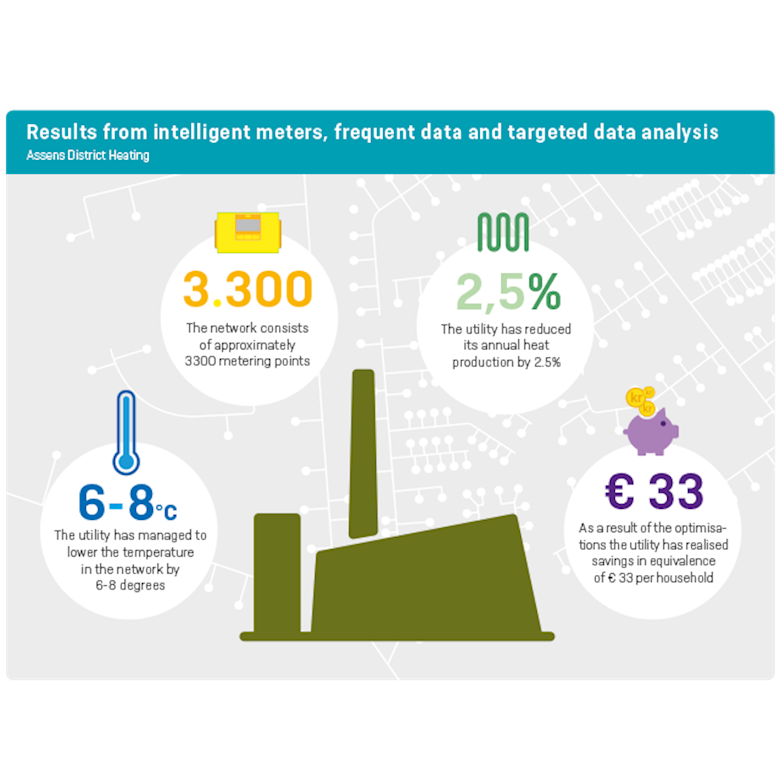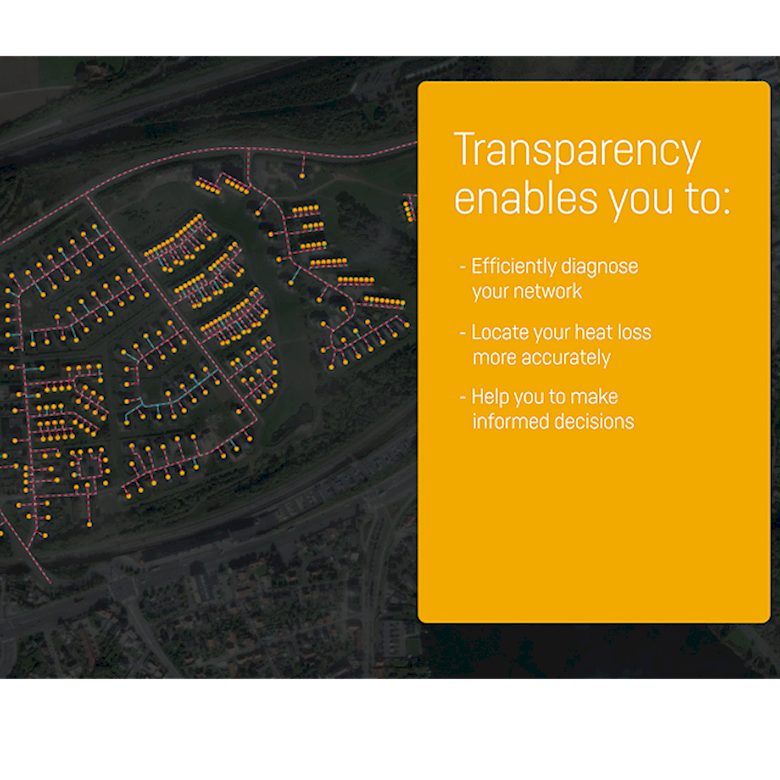Posted on Thursday, February 28, 2019 by Bjarne Sig Halkjær
How Automatic Meter Reading Generated an Annual Saving of €33 per Household
How a local district heating utility lowered the network temperature by 6-8 degrees, reduced annual heat production by 2.5% and reduced the overall pipeline losses by 12%
With more than 3.000 worn down mechanical meters, Assens District Heating utility in Denmark decided to invest in a digitalised solution with intelligent heat meters, automatic meter reading and a remotely read network solution. With this investment the utility went from reading their meters every half year to reading them every hour.
“Once all the meters were up and running, we were facing a wall of data. We didn’t exactly know how we would use all this data… But we were suddenly able to see – on an hourly basis – the exact temperature throughout the network.” says Marc Roar Hintze, CEO of Assens District Heating.
Immediate reduction of costs
Previously, the end-users living furthest away determined the forward temperatures in the distribution network. This resulted in a forward temperature being much higher than necessary. After implementing the digitalised investment, the first problem the utility optimised was the high forward temperature.
”Based on the continuous digitalisation of our operations, we have actually been able to lower the forward temperature by 6-8 degrees.” The utility has also been able to remove more than 100 bypasses around the network. Today the entire distribution network is optimised based on what in fact happens in the distribution network instead of estimates and expectations.
The significant decrease in forward temperatures in the distribution network has resulted in a total saving of €33 per household. The utility wants to optimise more on the consumer-side and estimates a potential saving of the same amount that the utility has already realised.Furthermore, the CEO of the utility expects that 80% of the savings can be obtained from 20% of the consumers. The frequent data allows the utility to pinpoint which consumers might have poor energy behaviour – and reveal what is in fact causing the poor behaviour.
Automatic meter reading and frequent data creates transparency.
”We have always known there were end users out there with poor cooling but now we are able to see why that is the case.”
Through close monitoring of the distribution network by collecting and analysing data from the intelligent heat meters, the utility has been able to focus their resources on where to renovate, where to operate and – more importantly – where not to use resources. By utilising data this way, the utility has been able to create a true transparency of their distribution network – something that they have never been able to do before, even with employees with more than 25+ years of experience.
Being able to know exactly what happens in the distribution network creates a significant potential for optimisation.” Our data has helped us understand our hundred kilometres of pipes and what actually happens out there when we e.g. lower the temperature.”
While the energy sector used to be very fragmented, today, everything is integrated from production to consumers and the way they will be included in much larger energy systems in the future. And that is what makes digitalisation so valuable: ”Digitalisation gives us the necessary overview and transparency to navigate in systems that are becoming more and more complex.”
For Assens District Heating, transparency is also essential for incorporating renewables in its system with the complexity of variable sources like solar energy, wind and surplus heat. ”It is no longer simply about turning an engine on or off. Now we need forecasts for the wind, the sun, the consumption etc.,” says Marc Roar Hintze and continues: ”I predict that we will reach real-time data collection before long – especially as the data quantity becomes easier to handle and faster to analyse. That will allow us to see brand new things.”
Even today, the CEO has no doubt that investing in digitalisation was the right decision: ”Five years ago, we just thought we would be able to improve our billing process and perhaps do some system optimisation but the potential is clearly much bigger than that. Already now we can see the return on our investment. And we know there’s more to come.”
Want to know more about the solutions that create the same potential for your utility?
If you want to learn more about how our solutions can create transparency in your distribution network and ultimately save you resources and lower your costs, click here.



